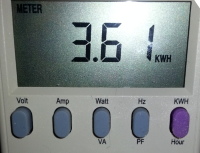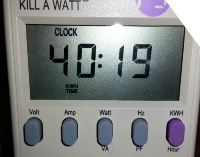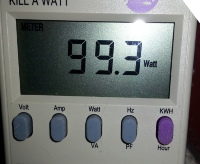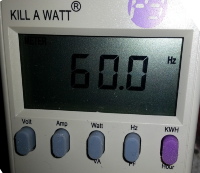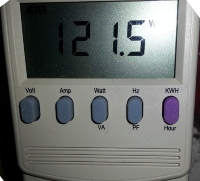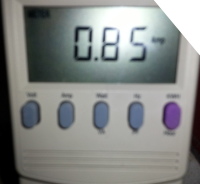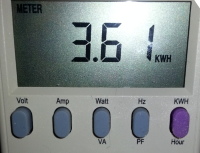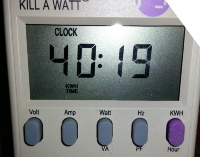There are a bunch of other things that come to mind when doing an efficient build or rebuild these days.
Modem ]
Router ]
Switch ]
Wifi ]
... These three no one looks at. Big issue with this stack is normally they are 24/7/365. If doing solar/wind/alt power, no way to sensibly run these 24/7, or anything else unless you have a big system which is cost prohibitive at scale (watts really add up on 24/7 run time).
In fact I haven't watt tested my current gear at all, but going to (glad for this thread). I know my 24 port switch is a pig, but it's managed and gets good throughput on a high performing fabric. Trendnet makes alright desktop gigabit switches with power savings functionality baked in (5 and 8 port models).
Modem and router ---- likely best in a combo unit that bundles both and throws the wifi in and a few ports out back of switching. I can't do that with my setup and size of network or I would.
Storage --- you can go in chasis storage which I do on top of runtime SSDs. Downside in efficiency model is that if you do anything like DLNA or serving content to other things (TVs, tablets, phones, etc.) that will require computer to be on while doing other things. Really can ruin power off savings.
There are slews of ARM based boxes with various interfaces for tethering storage (usually and most commonly USB). Raspberry Pi is one such solution Mann already has. Tethering the Pi to 1 or 2 USB external big drives might be the best mix of watts and isolation. I do something similar with repurposed Pogoplugs to drive everything in my world. It isn't high performance, but it works very well for a single user world where you aren't needing to say edit video or push masses of data right now all at once. Now assuming with such ARM device, running Linux that the external drives are rightly config'd, support, and using spin down modes (recommend using 2.5 inchers that are designed for such cycling - desktop drives historically get beat up by power ups and downs). You will save on watts by having your storage on 2.5" drives regardless of where they are.
Other thing related to much of this is your AV system. Driving a 32" TV, especially a Smart model gets spendy on power if running that during most of your waking hours and especially during work. Resizing to perhaps a high resolution tablet could save quite a bit. Then again, I've never been fond of the whole display thing where humans have low res, but nearly right sized heads. TV isn't that surreal and submersive.... I like the whole tunnel vision triangle where I have the widest view looking forward at a narrower object.
If you run speakers and amp, more optimization there. That can really eat watts when on and unused.
When doing a rebuild like this, pieces often aren't so common. All are mail order. So you have to take proper steps to stock spares yourself. Next time out to market finding pieces might yield little to no matches and waiting around for the Fedex or mailman to drop your package just sucks.
When I did my power efficient builds years back, did mini itx stuff. Made sense then. Quickly determined high fail rate on AC-to-DC wall warts, so I bought several spares. Router combo unit, similarly, I picked another one up and config'd as a hot spare since I had everything going through there (wifi + internet + switching).


